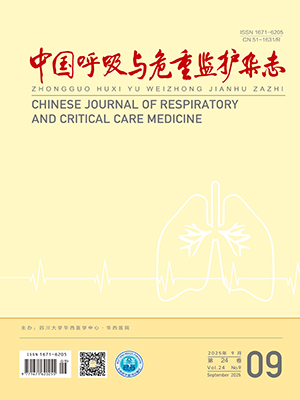Objective To observe the effects of ambroxol injection on mucosal surface structure of trachea injured by intratracheal instillation of amikacin.
Methods 280 Wistar rats were randomly divided into four groups( n = 70 in each group) , ie. a normal control group, a normal saline group( intratracheally instilled normal saline) , an amikacin group ( intratracheally instilled amikacin) , and an ambroxol group ( intratracheally instilled amikacin and ambroxol simultaneously) . At the time points of 2, 12, 24, 48, 72 hours six animals in each group were killed and the samples of 1/3 lower segment of trachea were collected and observed by scanning electron microscope. Endotracheal intubation were made on other 6 animals to collecte broncho-alveolar lavage fluid ( BALF) for leucocyte count.
Results Compared with the normal control group, elevated leucocyte count was observed in all other groups, various grades of swelling of the cilia were revealed, followed by more or less cilia laid flat with adjacent cilia conglutinated. Then partial cell membrane on top of some cilia bulged out. In terms of injury, the normal saline group was the most mild, and the amikacin group was most serious with the highest leucocyte count. All the parameters were relieved in ambroxol group.
Conclusions Intratracheal instillation of amikacin causes acute injury of the ultrastructure of mucosal surface cilia. Ambroxol can promote the recovery process and alleviate inflammation of airway.
Citation: HUANG Yuhai,LAI Guoxiang,LIU Deling,WEN Wen.. Injuries of Tracheal Mucosal Surface Structure Caused by Amikacin and Interference Effects of Ambroxol. Chinese Journal of Respiratory and Critical Care Medicine, 2012, 11(6): 571-575. doi: Copy
Copyright © the editorial department of Chinese Journal of Respiratory and Critical Care Medicine of West China Medical Publisher. All rights reserved




